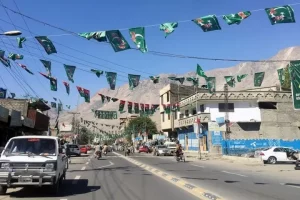Since the midnight of January 24 there has been calm on the Line of Control (LoC) and International Border and not a single shot fired following the Ceasefire agreement reached between the Director General of Military Operations of both India and Pakistan last week. The meeting which was held between the Director Generals of Military Operations of India and Pakistan also reviewed the current situation across the Line of Control (LoC) and other sectors ‘in a free, frank and cordial atmosphere’, said the joint statement released after the meeting.
This renewed pledge is working on the ground, people aware of the matter told the Hindustan Times but underscored that the truce would face its biggest test over the next few months when the snow, which clogs infiltration routes, starts melting.
Indian security officials told the daily that they are tracking the infiltration of terrorists from the military-supported terror pads in Pakistan for its assessment of the Imran Khan government's intentions.
“The ceasefire is a win-win for India and Pakistan and for the border population in the two countries,” said a top police officer in Jammu and Kashmir after the first review of the ceasefire starting May 24 midnight indicated that it had led to a huge change on the ground. “Not a single shot has been fired along the border since the ceasefire came into force,” the officer said.
The two armies announced the ceasefire after a discussion between India’s Director General of Military Operations (DGMO), Lt Gen Paramjit Singh Sangha, and his Pakistani counterpart, Maj Gen Nauman Zakaria on February 22. Diplomatic and military back channels had been preparing the ground for the discussion for months.
In a statement released later, the defence ministry said the two sides agreed to address each other’s core issues and concerns that could disturb the peace to achieve “mutually beneficial and sustainable peace along the borders”. The promise to adhere to the ceasefire agreement of November 2003 came into effect from January 24 midnight.
This is not the first time that India and Pakistan have agreed to give peace a chance on the LoC to make the lives of civilians living along the line easy. The original ceasefire agreement was reached in November 2003, four years after the Kargil War.
The 2003 ceasefire agreement remains a milestone as it brought peace along the LoC until 2006. Between 2003 and 2006, not a single bullet was fired by the jawans of India and Pakistan.
It is this ceasefire agreement that is referred to as having been violated whenever Pakistan fires at Indian posts along the LoC.
It is this ceasefire agreement that is referred to as having been violated whenever Pakistan fires at Indian posts along the LoC.
The peace along the border comes after firing and shelling by border guards on both sides for several years. But since 2006, ceasefire violations have become the norm with increasing frequency. Recent years have seen an increasing number of ceasefire violations despite an agreement reached in 2018 to adhere to the 2003 ceasefire agreement.
In 2018, more than 2,000 ceasefire violations were recorded. The number of ceasefire violations increased to over 3,400 in 2019 and over 5,000 in 2020. A total of over 14,000 ceasefire violations have taken place since 2006. In 2021, Pakistan has already violated the ceasefire close to 600 times.
Indian security forces responded to these violations and lately started the use of extended range Excalibur shells that can target important towns across the border to retaliate the Pakistani army targeting villages on this side of the fence. In the last three years alone, 341 civilians had died in the border firing that included small arms and artillery shelling.
Haji Mohd Shafi, village head of Pukharni, a border village in Jammu’s Rajouri district, thanked both the prime ministers for the ceasefire. “We can now sleep and work in peace,” he told news agency ANI.
Now there is a question mark on how long the fresh commitment to ceasefire along the LoC can hold especially with summers approaching. As a matter of annual routine, terror infiltration bids from Pakistan increase as summer begins in the Kashmir Valley. Melting of ice on the high mountains offers Pakistan an opportunity to foment terrorism in the Valley.
Indian security officials conceded that the ceasefire would face its biggest test over the next few months when the snow on the high mountain passes starts melting.
In the past, Pakistani Rangers often opened fire on the Indian side to give the terrorists cover fire or to distract Indian border guards away from locations and routes being used by the terrorists to infiltrate into Jammu and Kashmir.
If this happens again, it would bring the stated intentions of Prime Minister Imran Khan and Pakistan’s army into question, an official said.
The current arrangement is a step forward, but it is not peace. Pakistani Prime Minister Imran Khan, though welcomed the ceasefire agreement with New Delhi but put onus of creating an "enabling environment" for progress in bilateral relations rests with India. Two days after the ceasefire agreement, Imran Khan raked up the Kashmir issue again, "I welcome restoration of the ceasefire along with the Line of Control (LoC). The onus of creating an enabling environment for further progress rests with India. India must take necessary steps to meet the long-standing demand and right of the Kashmiri people to self-determination according to UNSC resolutions,” he tweeted.




















